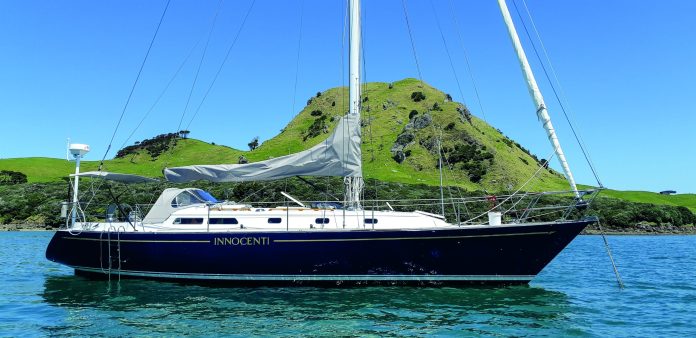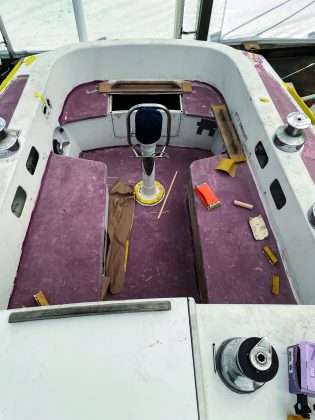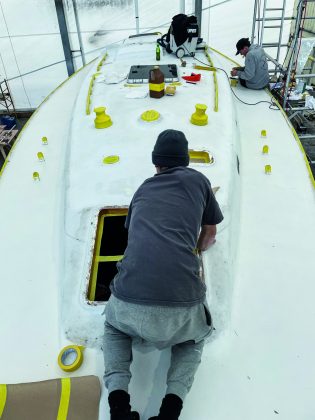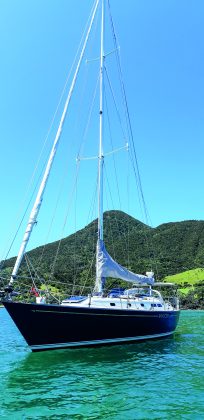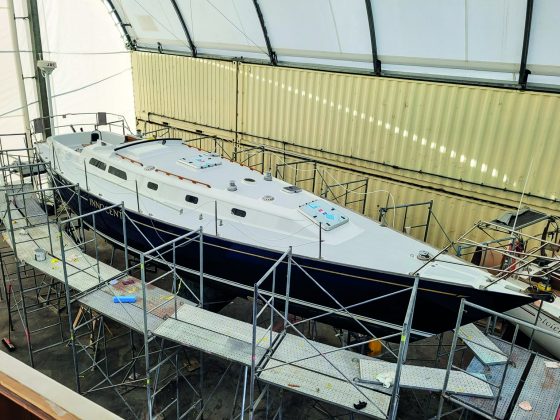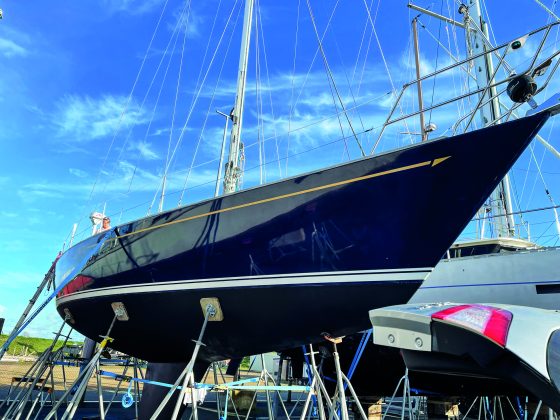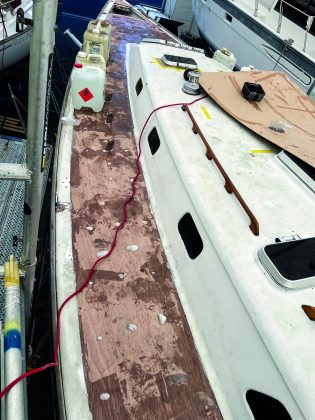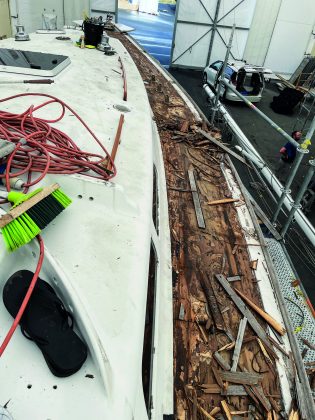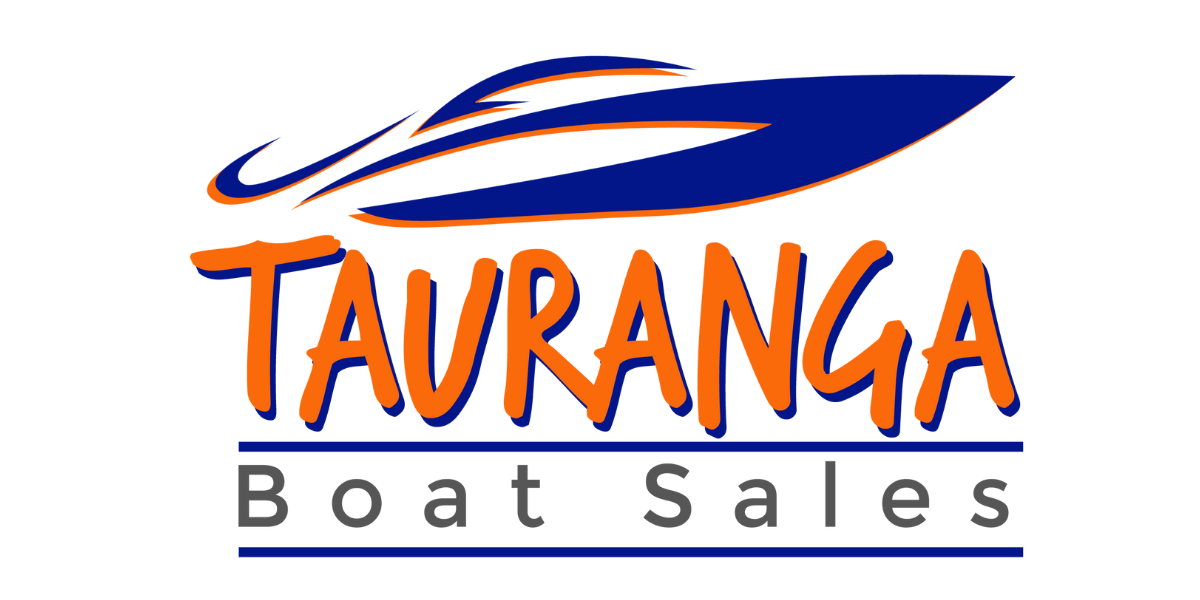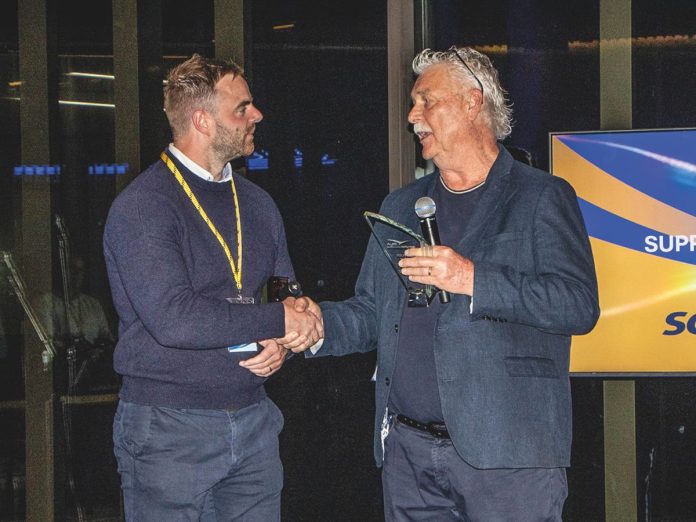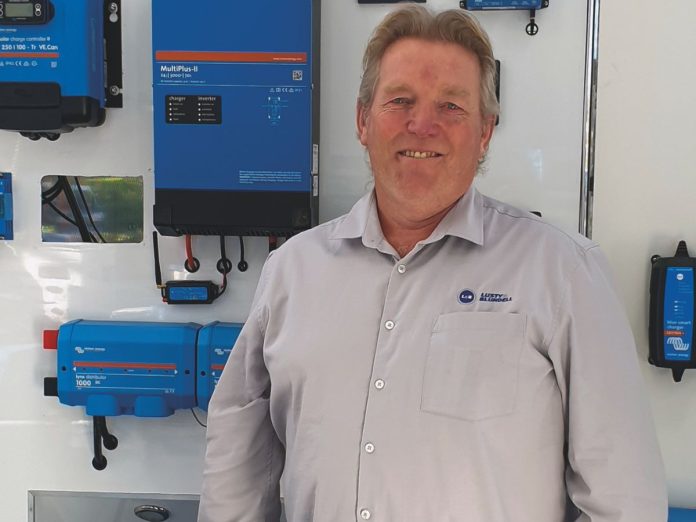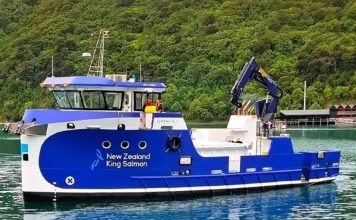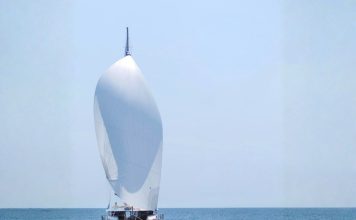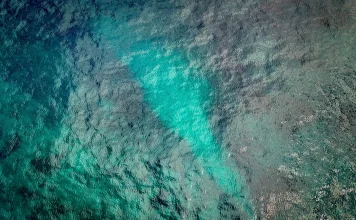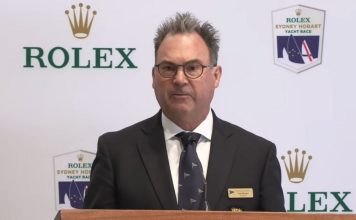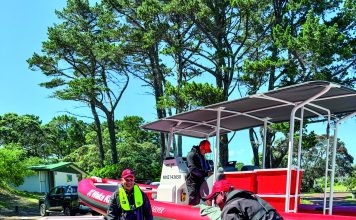After nearly five months in the shed (May to October, 2022), Innocenti slid back in the water, restored to her former glory (mostly) and ready for the next big adventure. In the meantime, our bank account had been cleared out, and we had to come up with ever more creative ways to fund our planned circumnavigation and to actually drop the lines and depart.
Over the years, I’ve learnt to multiply any boat estimate my ever-optimistic husband comes up with by three and add a bit more… then we might be in the ballpark! The problem is that this boat is part of the family. She has been our home, carried us safely offshore, and played a huge part in shaping our lives, so we couldn’t leave her to languish and deteriorate any further. The job had to be done!
In 1982, 43 years ago, Innocenti was launched. She was designed by Bruce Clark and built by the legendary Bob Wilson in the Brin Wilson yard in Gulf Harbour, north of Auckland. Three sister ships were built around the same time: Quintessence, Allegresse and Toronui, all of which have been well-loved and well-sailed during the years since.
Innocenti is a classic New Zealand yacht of the 1980s era, 42 feet long (12.8m) with a moderate fin keel and constructed from three skins of kauri, wrapped in a light fibreglass skin. She was built with teak decks, elegant lines, and painted navy blue with a gold stripe.
She’s led an interesting life. She was built for Tim Bailey, founder of Continental Cars, Auckland, who planned to enter her in an Admiral’s Cup race. Her name, we believe, comes from Bailey’s love of European cars, in particular the Porsche sports cars designed by Italian Pietro Innocenti.
The next owners had the boat for 17 years, including completing a seven-year circumnavigation, before we bought her in 2005.
We did a couple of offshore trips, including spending a New Zealand winter in New Caledonia. With our three young children, we went to Tahiti, then west through the Pacific Islands to Australia and Tasmania for the 2009 Australian Wooden Boat Festival.
In the years since cruising with the family, we moved ashore. Work, kids’ schooling and life in general became a priority. Although we still used the boat frequently, the maintenance schedule of spending 10% of the boat’s value each year sort of fell by the wayside. Instead, we did 10 years’ worth of maintenance during the five-month refit. We spent all that money at once! And I’m not going to lie – it was expensive, like, deposit-on-a-house expensive!
We prepared our boat for a circumnavigation. Below are listed some of the things we did as a priority. It is by no means complete, and there were certainly things I’d loved to have done, such as having the topsides re-sprayed, but we wanted to depart, and the bank balance was shrinking. But, we weighed up the ‘must-haves’ against the ‘nice-to-haves,’ and we’ve sailed safely and relatively comfortably to Europe so far.
This is what our pre-departure refit looked like…
• Removed the teak decks: I love the look of teak decks, but
they were leaking and simply worn out after 40 years. We
costed replacing the teak, but we could have bought a new
boat for the same price! I thought that a good compromise
might be having teak on the cockpit sole and seats. That was
going to cost $17,000. Scrap that idea! We ended up using
glass over ply and Kiwigrip. I think it looks great.
• New anchoring gear: We now have a remodelled anchor locker, new chain and a new windlass with a “flash as” remote.
• Spinnaker poles: Gone are the heavy metal poles that were a trip hazard on the deck. We’ve now got very light carbon poles, now stored on the mast.
• New hatches: We replaced the front hatch, the main hatch, and the two small hatches over the galley and the bathroom.
• New upholstery: This was my favourite thing. The upholstery was last replaced 25 years ago in Trinidad.
• New dinghy and outboard: This became a priority. The dinghy becomes your car, but the old dinghy had turned into chewing gum, and the inflatable floor kept deflating. We had a 15hp Yamaha, which was too heavy for us to lift. Our poor little 3.3hp had been flogged to death by the children. No amount of servicing and nursing along could bring it back to life. So, we purchased a smaller, lighter RHIB with a four-stroke 2.5hp Suzuki outboard. Perfect for the two of us.
• Remodelling of the lazarette: This makes access so much easier. We had the front panel of the back seat cut out, which can now be slid in and out like the companionway hatches. So much easier to stow things.
• New furler (forestay), furler and sail on the inner forestay: Smooth running and very easy to furl the headsail, and easy to use the staysail.
• New Raymarine instruments: These replaced the original ones in the last month or so. We were struck by lightning, but that’s another story. We’re very satisfied with the Raymarine instruments.
• Navionics system with iPad: We mount the iPad in its waterproof case on a Railblaza mount at the steering station. Perfect and simple.
• New toilet and replumbing of shower sump: A simple Jabsco manual toilet, which after two years of living on board is ready to be replaced again.
• New autopilot: Raymarine with a Type 1 linear drive. It has steered thousands of miles from New Zealand to Europe.
I stroke it and shower it with praise every day!
• New oven: A beautiful-looking Force 10 stove and oven. Every crew appreciates good food, right? Refilling gas bottles has proven to be a problem in Europe. Most boats these days have induction stove tops and electric ovens.
• New house and engine start batteries: We still use lead-acid batteries; we haven’t graduated to lithium batteries. That would require totally rewiring the boat, and we needed to get underway.
• New house alternator and engine alternator refurbished: Belt-tensioning systems remodelled, which made a huge difference in being able to easily tension the belts.
• Bat-car system on the main sail: So much easier to get the main sail up and down in a hurry. This, coupled with reconfiguring the reefing system, has made it so much more efficient to reef the sails quickly and safely.
• Category 1 first aid kit, life raft, and all new safety equipment: Good quality safety equipment to Category 1 standard is non-negotiable. It proved impossible to update the medicines in the Cat 1 first aid kit in Asia, but now we’re in Europe, so it’s not really a priority.
There will always be maintenance and repairs along the way when undertaking such a significant trip. We had new sails made at Rolly Tasker’s loft in Phuket (the old ones were looking very saggy). We plan to winter in San Remo, where inevitably, after so much sailing, there are more jobs to be done, some of them expensive. The hot water cylinder sprang a leak, so it has been cold showers since the Maldives, and the 17-year-old watermaker quit at the worst possible time while going through the Red Sea. Winter will be busy with repairs and maintenance projects.
So, whether your boat is a brand-new production boat or an old wooden boat like ours, there will always be things to improve, update and repair – that’s boating.








